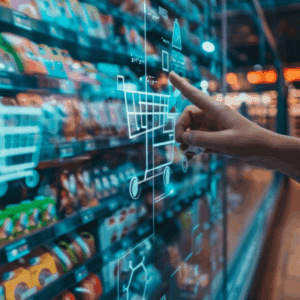By Brad Brodigan, PayPal

Imagine: You are driving home from work and pass by one of your favorite clothing stores. Your phone recognizes the location and pulls up an offer for 25% off. You go in, find a sweater that you love but can’t find it in the right size. So you go to the retailer’s app or mobile site, scan the barcode and find the sweater in your size. Because you’re traveling to NYC in a couple days and you don’t want to pay for express shipping, you select the checkout option that lets you buy online and pick up in-store at the location near your hotel in NYC. Of course, checkout is simple because the retailer set up tools that enable one-touch checkout, so that checkout is as easy as tapping a button — without requiring a customer to enter in all their payment, shipping and billing information.
This may sound futuristic, but this scenario is possible today largely because of the power and growing ubiquity of mobile.
American consumers spend an average of five hours a day on their mobile devices. That’s up from around four hours the year prior. This “always on” connectivity — high speed cellular networks, ubiquitous WiFi and “smart” devices — has enabled consumers to manage their day-to-day lives on their mobile devices. This shift has enabled consumers to search and buy what they want, when they want, and where they want, all from a few taps on their mobile device.
The Blurring Lines Of Multi-Channel Commerce
Mobile itself is evolving, blurring the lines that traditionally existed between digital and physical commerce. Using your smartphone to buy your favorite cup of coffee in advance, allowing you to skip the line at peak times, or re-ordering printer ink from an app and arranging in-store pickup, are other examples of this blurring of the lines between “clicks and bricks”.
Physical businesses are quickly realizing that they need a successful and effective mobile in-store strategy — beyond just tap and pay at the point-of-sale. An effective mobile strategy needs to add real value for consumers. There must be a seamless experience across the web and app interfaces so consumers can instinctively use whichever channel they choose. It makes the buying experience better by integrating a secure payment method that breaks down the barrier to checkout.
Additionally, there must be an integration of loyalty programs and discounts for consumer benefit — whether these are new or already existing. These experiences help increase consumer engagement and loyalty, and ultimately drive conversions and sales for merchants.
Mobile Is Enabling Commerce In New Contexts
Mobile is also extending commerce into new contexts, enabling things from social commerce to messaging commerce. Today, consumers can make purchases across social sites like Pinterest and Facebook Messenger, messaging platforms like Slack and iMessage and even virtual, intelligent assistants like Siri.
But the power of mobile extends far beyond being able to check out across channels via a mobile device. One of the most powerful aspects of mobile is its ability to be context-aware, so the consumer doesn’t need to type in any additional contextual data, ensuring the purchasing experience does not cause friction with the consumer. Because a mobile device is able to recognize what is around you — everything from location to previous purchases to preferred funding sources — it has the ability to drive more personalized commerce experiences that utilize these characteristics.
These personalized experiences can be anything from recommending a local restaurant based on your history, offering a car service when you are at an airport or presenting an offer to finance a large purchase you are considering.
Mobile is fundamentally changing the way people think about commerce, and how and where consumers connect with businesses. The businesses that see mobile as a key part of a full 360-degree approach are the ones that will attract more prospects, drive increased conversions and ultimately boost sales. With ever-growing options, consumers will increasingly shop and spend money at businesses and retailers that enable superior mobile experiences, taking a greater share of how much consumers spend.
Brad Brodigan is VP and GM of Retail & Mid Market, North America for PayPal. With more than two decades experience leading companies that provide the tools and technologies to help businesses thrive, he brings extensive knowledge of the industry and the issues that merchants face. At PayPal he has led global Retail Strategy and now is responsible for both the Mid Market Business Segment as well as Retail Strategy for North America. Brodigan oversees all efforts to bring PayPal’s product experiences to retail and mid-market merchants across North America, including marketing, channel development, and fulfilling demand for PayPal’s offline products, services and devices.






